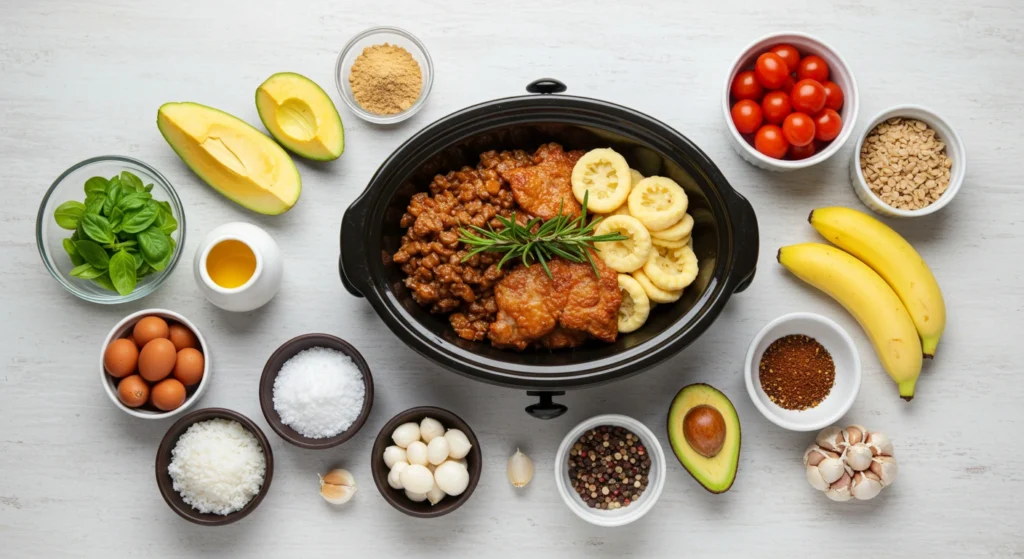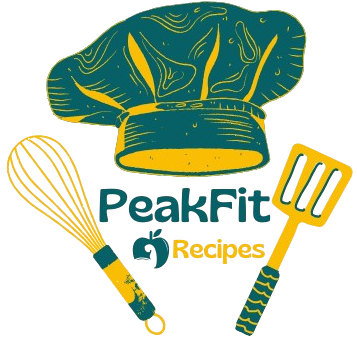What cannot be cooked in a slow cooker? It’s a common question for those diving into the convenience of slow cooking. While this appliance is incredibly versatile, there are definite limits to what it can handle. Understanding these limitations will help you avoid culinary disasters. Therefore, mastering slow cooking requires knowledge of what not to include.
The Surprising Limitations of Slow Cooking
Slow cookers are designed for low-temperature, long-duration cooking. They excel at breaking down tough cuts of meat and blending flavors slowly. However, this method doesn’t suit all types of food. The moist environment and consistent heat can be detrimental to some ingredients. Consequently, careful selection is key for successful slow cooker recipes.
Dairy Products and Delicate Sauces
Dairy products like milk, cream, and cheese often curdle or separate at slow cooker temperatures. This leads to a grainy, unappetizing texture. Therefore, it’s best to add dairy at the very end of the cooking process. Furthermore, delicate sauces tend to break down. Adding them in the last 30 minutes can prevent this. This method preserves their intended consistency.
Crunchy Vegetables
Certain vegetables, especially those that are meant to be crispy, turn to mush in a slow cooker. This includes foods such as broccoli, peas, and bell peppers. Overcooking causes them to lose their vibrant color and texture. Therefore, it’s best to add these during the last hour of cooking. This helps preserve their crunch. Consider roasting them separately for the best results. Image Placeholder: A visual of a slow cooker next to a plate of soggy, overcooked vegetables. Alt Text: “Terrible Slow Cooker Fails with Crunchy Vegetables”
Seafood
Seafood, generally delicate and quick-cooking, overcooks easily in a slow cooker. The prolonged heat often makes the fish dry and rubbery. Hence, it’s almost always better to cook fish using a faster method like sautéing or grilling. Additionally, shellfish becomes tough when overcooked. Therefore, avoid slow cooking most seafood. There are some exceptions, like fish stew. However, these need careful monitoring.
Foods That Require Browning
The slow cooker doesn’t get hot enough to properly brown meats. Browning adds depth of flavor and texture to dishes. Skipping this step can result in a bland-tasting final result. Therefore, it’s better to brown meat before adding it to the slow cooker. This is a crucial step in many recipes. You can brown meat on a stovetop. A separate searing step is crucial for optimal flavor.
What Cannot Be Cooked in a Slow Cooker? – Specific Examples
It’s essential to delve deeper into the specifics of foods that don’t fare well in a slow cooker. Understanding the reasons behind these failures will empower you to make the best choices for your meal preparation. Therefore, exploring these specifics can refine your slow-cooking approach.
Pasta and Grains
While some slow cooker recipes include pasta, it can easily overcook and turn mushy. The excess moisture in the slow cooker breaks down the starch. Therefore, it is best to cook pasta separately. Grains like rice also suffer from similar issues. The high moisture content can result in a gluey, overcooked mess. Hence, cook rice separately on the stovetop or in a rice cooker. These approaches lead to far better texture and results.
Eggs
Cooking eggs in a slow cooker can be tricky. The slow heat often leads to rubbery, overcooked whites. Furthermore, the yolks might become dry and crumbly. Thus, while it’s possible, it’s not ideal for the majority of egg preparations. Scrambled eggs are particularly challenging. Therefore, avoid cooking eggs directly in a slow cooker.
Delicate Herbs
Fresh herbs, though wonderful additions to dishes, can lose their flavor and vibrancy when cooked for extended periods. The slow cooker’s gentle heat is not ideal for delicate herbs. It can result in a muted, sometimes bitter taste. Therefore, add fresh herbs toward the end of the cooking process. This preserves their fragrance and flavor. A final sprinkle before serving will yield the best result.
Common Slow Cooker Mistakes and How to Avoid Them
Knowing what not to cook is only part of the battle. Avoiding common slow cooker mistakes is crucial to achieving the best results. These errors can lead to less-than-ideal outcomes. Therefore, awareness and precaution are key to mastering this kitchen appliance.
Overfilling the Slow Cooker
Overfilling the slow cooker can lead to uneven cooking and potential spills. There needs to be enough space for the steam to circulate. Therefore, don’t fill your slow cooker past the maximum fill line. Overcrowding hinders the cooking process. This can result in poorly cooked food and uneven temperature distribution.
Opening the Lid Too Often
Lifting the lid during slow cooking releases heat and steam. This increases the cooking time. It can also affect the overall tenderness of your dish. Therefore, try to avoid opening the slow cooker lid unnecessarily. Each time you open the lid, you add about 20 minutes of cook time. The longer the cooking, the better the results.
Using Too Much Liquid
Slow cookers create their own moisture as foods cook. Adding too much liquid can result in a watery dish. Therefore, reduce the amount of liquid in your recipe. This can lead to richer flavor and better consistency. Using less liquid helps prevent a diluted or undesirable final product.
Not Adjusting Cooking Time for Different Cuts of Meat
Different cuts of meat require different cooking times. Tender cuts can overcook and become dry. Tough cuts benefit from longer cooking times. Therefore, pay attention to the type of meat used in your recipe. Adjust the cooking time to match its specific characteristics. This leads to optimally cooked and tender meats. Image Placeholder: A comparison of a perfectly cooked piece of slow-cooked brisket versus a dry overcooked piece of meat. Alt Text: “Slow Cooker Meat Cooking Times”
What Cannot Be Cooked in a Slow Cooker? – Recipe Alternatives
When you encounter ingredients that are unsuitable for slow cooking, understanding alternative methods is extremely important. These alternatives can ensure your meals come out perfectly cooked. Therefore, learning alternative cooking methods opens up new culinary possibilities.
Alternatives for Dairy Based Sauces
Instead of adding dairy directly, incorporate it after removing the food from the slow cooker. You can gently stir it in to prevent curdling. Consider using a thickener such as cornstarch or arrowroot. These can create richer sauces. Furthermore, you can achieve a smooth texture by adding dairy after the cooking process ends. This can dramatically improve your sauce results.
Alternatives for Crunchy Vegetables
Roasting or sautéing these vegetables separately is a much better option. This preserves their texture and color. You can add them to the final dish after the main cooking process is complete. Additionally, grilling can achieve similar results. The key is to use quick methods at high temperatures.
Alternatives for Seafood
Quick-cooking methods such as pan-searing or grilling are much more suitable for seafood. These preserve the delicate texture and flavor of the fish. You can also steam or poach fish for equally good results. Moreover, these faster methods avoid overcooking seafood. This leads to a more appealing and tasty outcome. Image Placeholder: A variety of seafood cooking methods, such as frying, grilling, and baking. Alt Text: “Alternative Seafood Cooking Methods”
Alternatives for Browning
Sear meats in a hot pan with some oil before placing them in the slow cooker. This adds a rich, caramelized flavor to the dish. This step can also be performed in the oven. Browning adds much more depth to slow cooker recipes. This improves the overall taste of your meal substantially.
The Benefits of Using a Slow Cooker Wisely
Knowing what not to cook is just as important as knowing what to cook. Using your slow cooker wisely means understanding its strengths and limitations. It ultimately increases the quality and enjoyment of your meals. Therefore, understanding these key points maximizes the efficiency and appeal of slow cooking.
Time Saving and Convenience
A major advantage of slow cookers is their convenience. They allow you to prepare meals with minimal effort. Set it and forget it. This is ideal for busy individuals. This appliance is a timesaver and makes cooking less stressful. Therefore, it provides more free time for other activities.
Enhanced Flavor Development
Slow cooking allows flavors to meld and develop over a long period. This produces rich, complex flavors not achievable by other cooking methods. It breaks down tough cuts of meat to tender perfection. This method of cooking consistently creates delicious and flavorful meals. Therefore, slow cooking offers a unique approach to enhanced flavor.
Cost Effective Meal Preparation
Slow cooking often involves using less expensive cuts of meat. The slow cooking process tenderizes these cuts. It makes them as flavorful as more expensive choices. Therefore, this can save a lot of money on grocery bills. Furthermore, slow cooking is ideal for larger families or meal preparation. It’s a cost-effective approach to tasty meals.
The Final Word on Slow Cooker Limitations
While a slow cooker is a convenient appliance, it is not suitable for every food. Understanding what cannot be cooked in a slow cooker will greatly improve your cooking results. It also ensures that you avoid common mistakes. Therefore, this knowledge enables you to become a more proficient slow cooker user.
By understanding the limitations of a slow cooker, you can make the most of this kitchen appliance. You’ll also avoid some frustrating kitchen mistakes. Knowing when to use the slow cooker and when to choose other cooking methods is key. Therefore, using this wisdom will improve both the process and the outcome. It is the key to successful slow cooking. Image Placeholder: A person smiling while enjoying a meal prepared in a slow cooker. Alt Text: “Successful Slow Cooking Techniques”

FAQ
Is there anything you cannot cook in a slow cooker?
Yes, there are several foods that do not cook well in a slow cooker. These include delicate dairy products, crunchy vegetables, seafood, and foods that require browning. Additionally, pasta and grains can turn mushy due to the excess moisture.
Can you throw raw meat in a slow cooker?
You can put raw meat in a slow cooker, but browning it beforehand is recommended for the best flavor and texture. Browning enhances the taste and creates a better color for the dish. However, raw meat can safely be cooked as long as it reaches the proper internal temperature.
What are some of the mistakes people make using a slow cooker?
Common mistakes include overfilling the slow cooker, opening the lid too often, using too much liquid, and not adjusting cooking times for different ingredients. Also, skipping the browning step can result in less flavorful dishes. Therefore, proper technique is necessary for the best results.
What are the disadvantages of a slow cooker?
Disadvantages of slow cookers include their inability to achieve a crispy texture, their tendency to overcook delicate foods, and the fact that some dishes require extra steps like browning before cooking. Additionally, some foods simply do not taste great when slow-cooked. Therefore, a variety of cooking methods are necessary.

